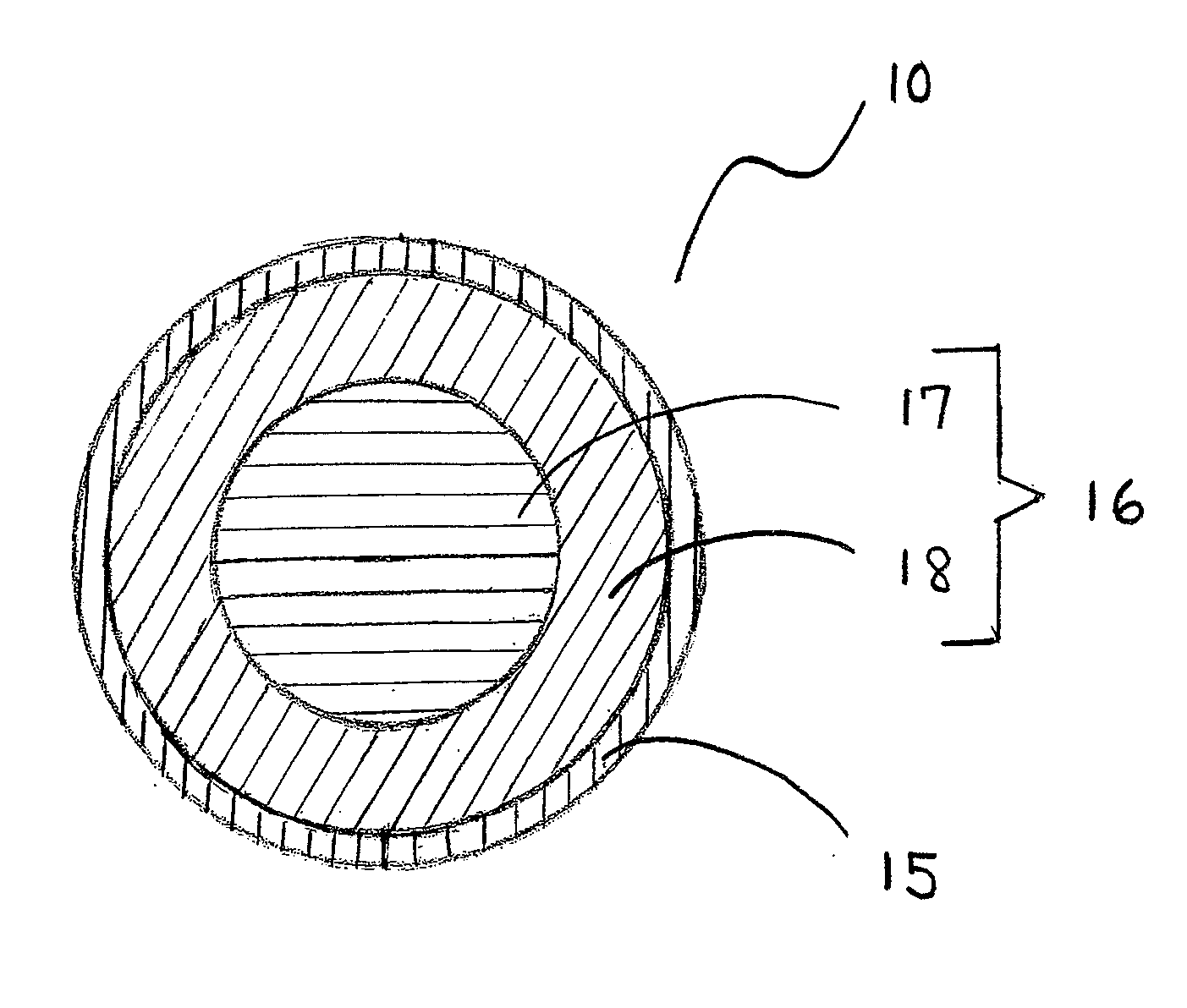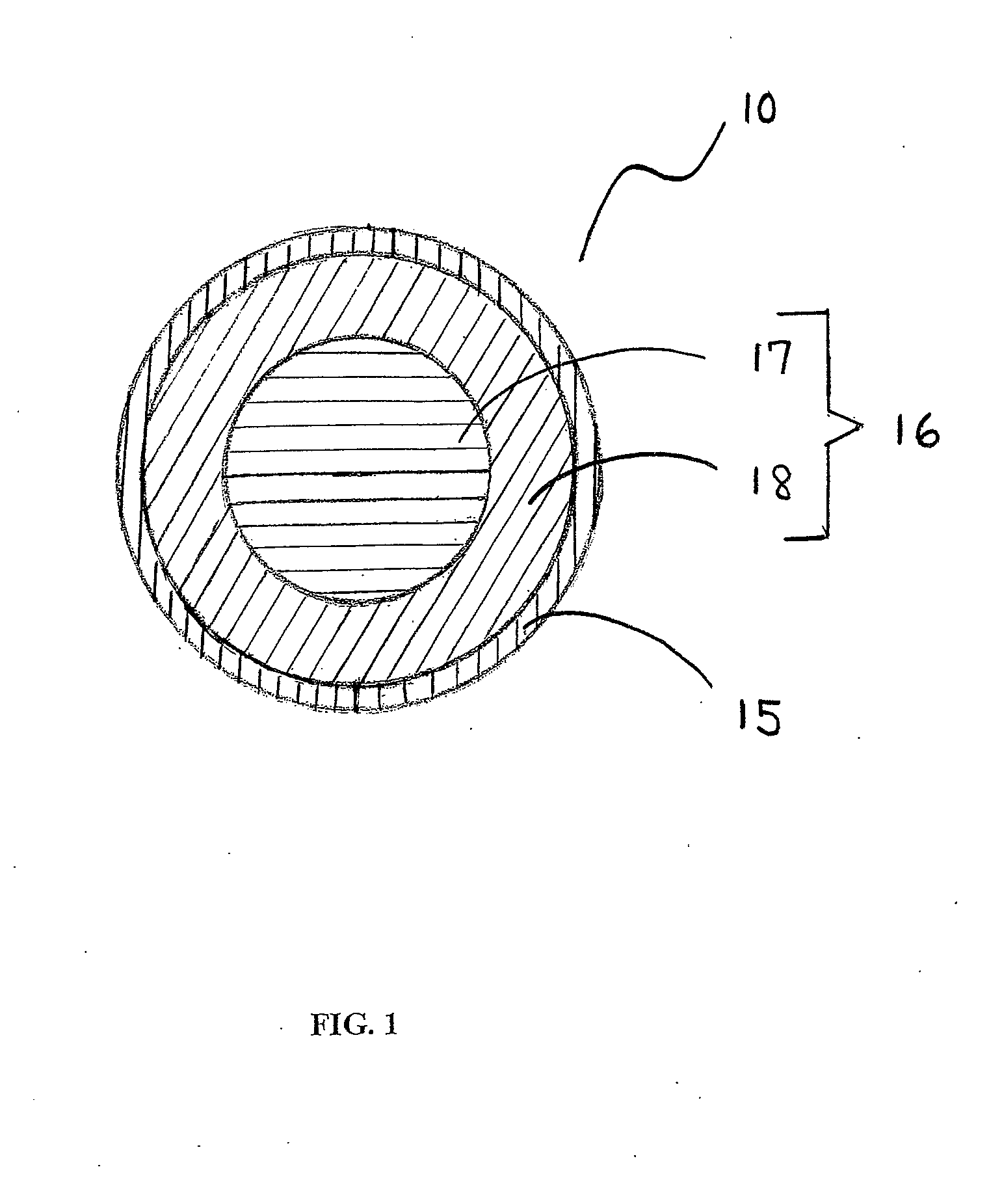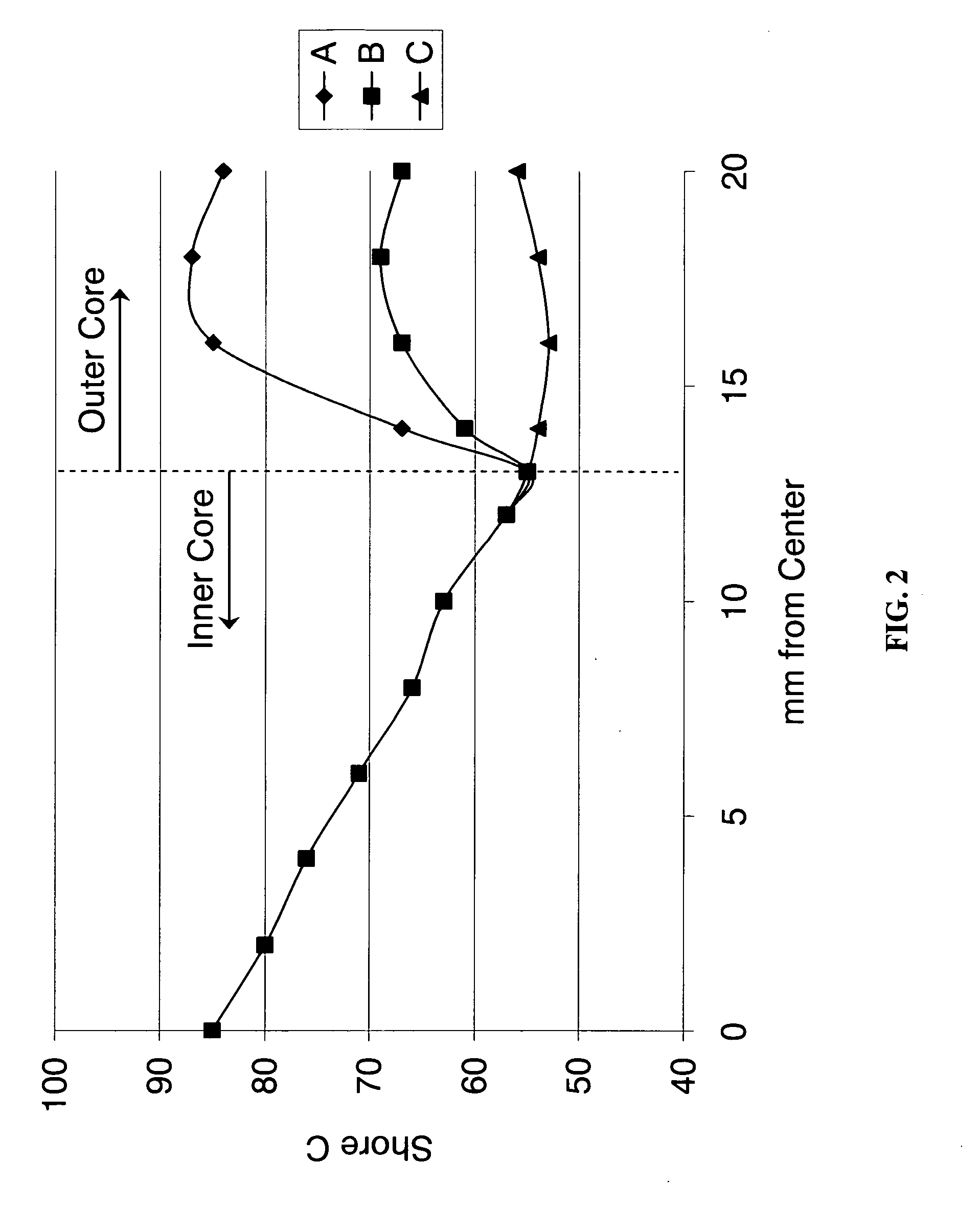Multilayer core golf ball having hardness gradient within and between each core layer
- Summary
- Abstract
- Description
- Claims
- Application Information
AI Technical Summary
Benefits of technology
Problems solved by technology
Method used
Image
Examples
Embodiment Construction
[0039]As briefly discussed above, each inventive core layer may have a hardness gradient defined by hardness measurements made at the surface of the inner core (or outer core layer) and radially inward toward the center of the inner core, typically at 2-mm increments. As used herein, the terms “negative” and “positive” refer to the result of subtracting the hardness value at the innermost portion of the component being measured from the hardness value at the outer surface of the component being measured. For example, if the outer surface of a core layer has a greater hardness value than its innermost surface, the hardness gradient will be deemed a “positive” gradient. Alternatively, if the inner surface of one layer of a multi-layer core has a greater hardness value than its inner surface, the hardness gradient for that core layer will be deemed a “negative” gradient.
[0040]Each region of a core layer (inner core region, or outer core region or intermediate core region) may be made f...
PUM
 Login to View More
Login to View More Abstract
Description
Claims
Application Information
 Login to View More
Login to View More - R&D
- Intellectual Property
- Life Sciences
- Materials
- Tech Scout
- Unparalleled Data Quality
- Higher Quality Content
- 60% Fewer Hallucinations
Browse by: Latest US Patents, China's latest patents, Technical Efficacy Thesaurus, Application Domain, Technology Topic, Popular Technical Reports.
© 2025 PatSnap. All rights reserved.Legal|Privacy policy|Modern Slavery Act Transparency Statement|Sitemap|About US| Contact US: help@patsnap.com



